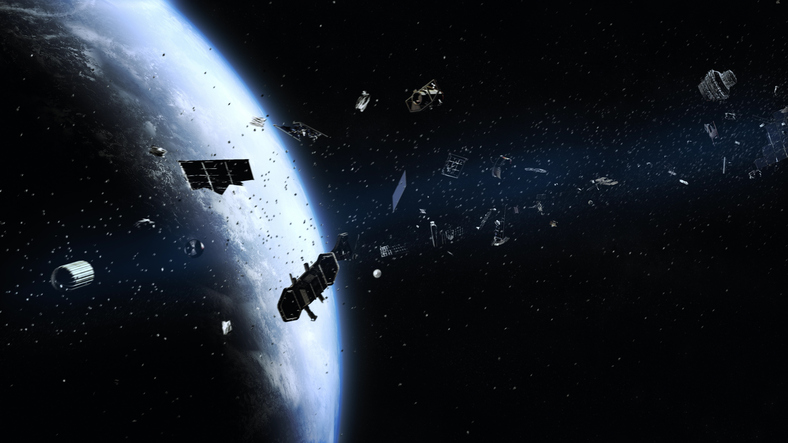

NASA Confirms It Was Space Debris That Crashed Through Roof of Florida Family’s Home
The risk of being injured by falling space debris is supposedly “under 1 in 100 billion,” according to the European Space Agency (ESA), but for one family in Naples, it came very close after a piece of junk from the International Space Station (ISS) tore through their roof last month.
“I was shaking. I was completely in disbelief. What are the chances of something landing on my house with such force to cause so much damage,” Alejandro Otero, who resided in the home with the rest of his family, told Southwest Florida TV channel WINK. “I’m super grateful that nobody got hurt.”
[time-brightcove not-tgx=”true”]
NASA confirmed on Monday, after analyzing the space debris in cooperation with the family, that what was initially a mystery object was actually a chunk of metal alloy Inconel that was expected to have disintegrated as it entered the Earth’s atmosphere on March 8. NASA said the cylindrical-shaped object—which was 4 in. tall, 1.6 in. wide, and weighed 1.6 lbs.—was part of a cargo pallet of aging nickel hydride batteries that the ISS released back in 2021.
The total mass of the released hardware was about 2.6 tons (about the same as an African forest elephant), and according to NASA, “specialists use engineering models to estimate how objects heat up and break apart during atmospheric re-entry.” After the unintended survival of what NASA said was a stanchion of the pallet, the ISS will now perform an investigation and update its modeling and analysis.
Low-Earth orbit space debris has been a problem since the first satellite launch in 1957. Since then, at least 36,500 objects greater than 10 cm. have been recorded, one million between 1 cm. and 10 cm., and 130 million under 1 cm., according to data from the ESA. And while the risk of these crashing down and injuring people on earth remains low, collisions in orbit—threatening satellites and other space technology—are increasing as the amount of space debris continues to pile up.
Read More: Falling Space Debris Is a Bigger Menace Than Ever
“NASA,” the agency said on Monday, “remains committed to responsibly operating in low Earth orbit, and mitigating as much risk as possible to protect people on Earth when space hardware must be released.”
Get the latest work and career updates delivered straight to your inbox by subscribing to our magazine category today. Stay informed and ahead of the game with Subscrb.
The content on this website has been curated from various sources and is for informational purposes only. We do not claim ownership of any of the content posted here, all rights belong to their respective authors. While we make every effort to ensure that the information is accurate and up-to-date, we cannot guarantee its completeness or accuracy. Any opinions or views expressed on this website are solely those of the original authors and do not necessarily represent our own. We do not endorse or take responsibility for the content or actions of external websites or individuals linked from this website. Any reliance on the information provided on this website is done at your own risk. Please note that this article was originally seen on the source website TIME, by the author Chad de Guzman
-
SALE!




Forbes Asia Magazine Subscription
From: RM220 / year -
SALE!


Fortune Magazine Subscription
From: RM118 / year -
OUT OF STOCK




The Economist Magazine Subscription
From: RM1530 / year -


Inc. Magazine Magazine Subscription
From: RM22 / year -


Consumer Reports Magazine Subscription
From: RM22 / year -


Harvard Business Review Magazine Subscription
From: RM83 / month -


Entrepreneur’s Startups Magazine Subscription
From: RM4 / year -


BILLIONAIRE Magazine Subscription
From: RM131 / year



